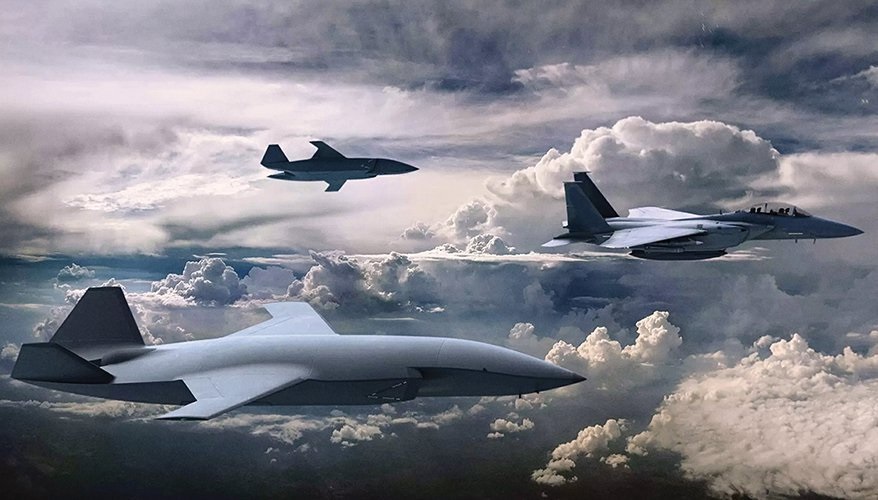Discover the game-changing potential of Collaborative Combat Aircraft (CCAs) in disrupting China’s airpower, as revealed by Mitchell Institute’s wargames.

Mitchell Institute for Aerospace Studies highlights the immense potential of Collaborative Combat Aircraft (CCAs) in a potential conflict with China in the Pacific theater. (Photo: airandspaceforces)
New Mitchell Institute Report Highlights the Impact of Collaborative Combat Aircraft (CCAs) on Air Warfare with China
Mitchell Institute for Aerospace Studies highlights the immense potential of Collaborative Combat Aircraft (CCAs) in a potential conflict with China in the Pacific theater. The report, titled “The Need for Collaborative Combat Aircraft for Disruptive Air Warfare,” revealed the findings from a series of wargames, shedding light on the critical role of CCAs in shaping future air combat strategies.
Retired Col. Mark A. Gunzinger, retired Maj. Gen. Lawrence A. Stutzriem, and Bill Sweetman, summarizing the wargames’ findings, emphasized the significant impact of CCAs when used by the U.S. Air Force in large numbers as reported in Air & Space Forces. These autonomous drones were shown to compel China to expend large numbers of missiles, creating beneficial chaos in the battlespace, and imposing a cost on the adversary, positioning them as a critical factor in potential future conflicts.
READ ALSO: US Strikes Iran-Linked Targets In Iraq And Syria In Retaliation
Participants in the wargames stressed the importance of low-cost Collaborative Combat drones in large numbers to potentially dominate in a conflict against China’s air assets. The report emphasizes that CCAs must be additive and complementary to crewed aircraft programs already in the pipeline, rather than substitutes for them, positioning them as force multipliers.
The wargames revealed that moderately capable, moderately priced mid-range CCAs significantly reduced the risk to crewed aircraft and compelled China to maintain a high pace of defensive operations around the clock. Additionally, utilizing CCAs cooperatively with crewed aircraft like the F-35 or the NGAD fighter was shown to enhance the mission capabilities of these manned aircraft.
READ ALSO: U.S. Immigration And Customs Enforcement (ICE) Arrests 171 Illegal Aliens Accused Of Serious Crimes, Including Rape And Child Sex Abuse Over Two Weeks




![Tyson Foods Plant [Photo: Food Manufacturing]](https://southarkansassun.com/wp-content/uploads/2023/08/iStock_1185520857__1_.5e441daa51cca-600x337.jpg)








![Silverado Senior Living Management Inc. [Photo: Los Angeles Times]](https://southarkansassun.com/wp-content/uploads/2023/10/download-6-4-600x337.jpg)

![China's Wuhan Institute of Virology [Photo: Nature]](https://southarkansassun.com/wp-content/uploads/2023/09/d41586-021-01529-3_19239608-600x337.jpg)















